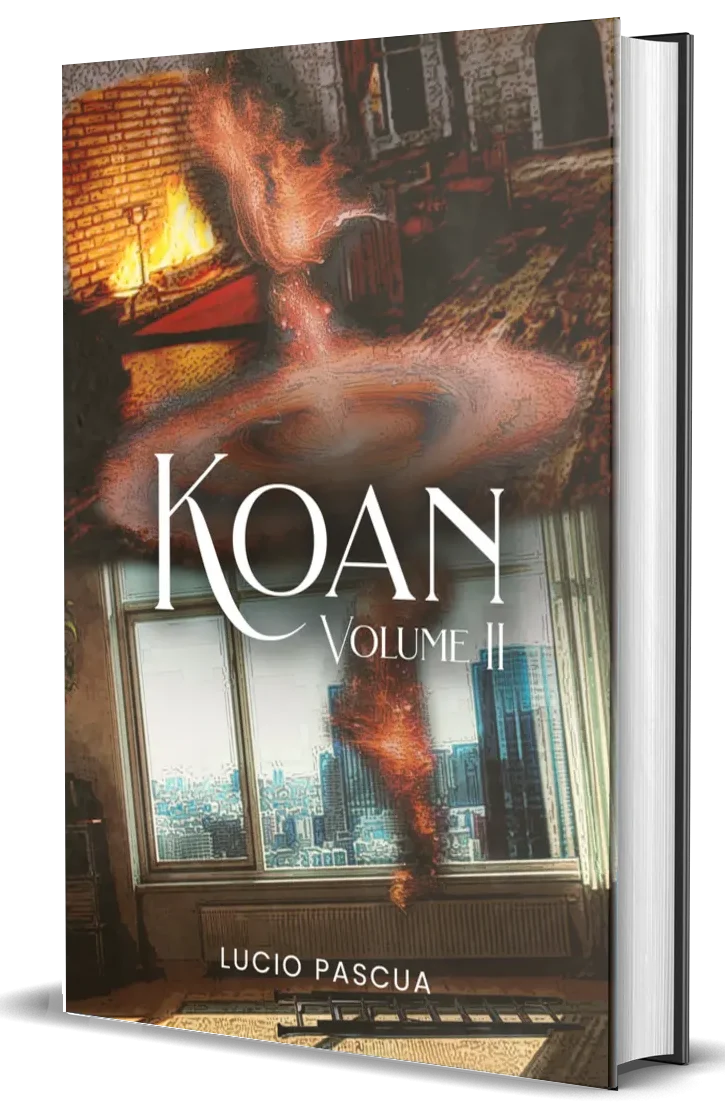Some books use metaphors to add layers of meaning. KOAN by Lucio Pascua goes further. It builds entire worlds out of them. In this ambitious blend of literary fiction, philosophical fantasy, and magical realism, metaphors are not simply figures of speech. They are living forces, characters, and landscapes that give the novel its depth and power. Through symbols like light, water, fire, and guardians, Pascua invites readers to experience not just a story, but an allegorical universe that resonates across cultures and traditions.

Light is one of the most enduring metaphors in KOAN, and Pascua transforms it into something both cosmic and intimate. Candles illuminate more than rooms. They embody wisdom, guidance, and the fragile persistence of hope. In the hands of characters like El-Javaz or the Enlightened One, light becomes a symbol of clarity in a universe threatened by chaos. Its glow is not simply physical but spiritual, reminding readers that enlightenment often comes in moments of stillness, not spectacle. The metaphor of light has deep cultural roots, from religious traditions to philosophy, and Pascua taps into this heritage to give his narrative universal appeal.
Water, too, flows through the pages as both a literal element and a symbolic force. In KOAN, rivers and seas are more than backdrops. They are metaphors for adaptability, cleansing, and transformation. Characters are tested in water, changed by it, and sustained through it. It reflects the unpredictability of the multiverse itself: calm one moment, turbulent the next. In a story concerned with destiny and choice, water becomes a reminder that survival requires both resilience and flexibility. Readers can see their own struggles mirrored in the ebb and flow, finding meaning in how water shapes, nourishes, and sometimes threatens the characters’ journeys.
Fire plays an equally powerful role, standing in for destruction but also renewal. When fires burn in KOAN, they are not just literal flames. They signal endings, transformations, or warnings of forces out of control. Fire can consume, but it also clears space for new growth. Pascua uses this duality to remind us that even chaos has a place in the balance of the universe. Like in myth and folklore across the world, fire becomes a force of purification, burning away illusions and forcing characters to confront uncomfortable truths.
And then there are the Guardians, perhaps the most striking metaphors of all. The Northern Tortoise, Eastern Dragon, and their companions are more than mythical protectors. They are allegories for the values that sustain life: endurance, vision, balance, and transformation. Each represents a cultural and philosophical truth, embodying ideas that transcend the boundaries of any one tradition. Through them, Pascua turns abstract virtues into concrete presences, allowing readers to see wisdom, courage, and harmony as living beings shaping the fate of the cosmos.
What makes these metaphors so compelling is not just their beauty, but their ability to connect readers across time and culture. Whether you read them as myth, philosophy, or allegory, they remind us that human beings have always used symbols to make sense of life’s mysteries. Like films such as The Fountain or Pan’s Labyrinth, KOAN transforms metaphor into experience, weaving symbols into narratives that feel both otherworldly and deeply familiar.
In the end, KOAN doesn’t just use metaphors. It inhabits them. Pascua shows that symbols are not mere decorations on a story but the very fabric of meaning itself. For readers, the journey is not just through a fictional world but through the enduring metaphors that shape how we understand existence.
Read KOAN by Lucio Pascua now, available on Amazon: https://www.amazon.com/dp/B0FHDQN2C1.